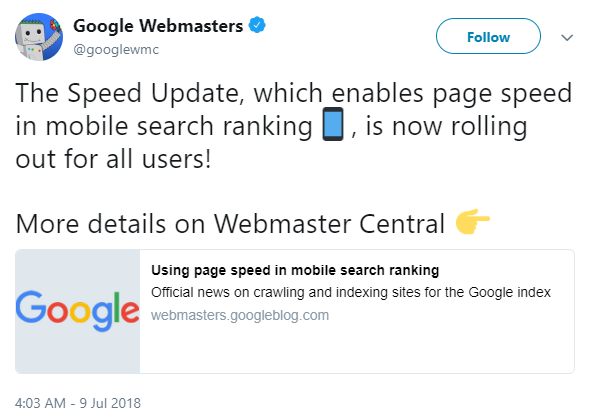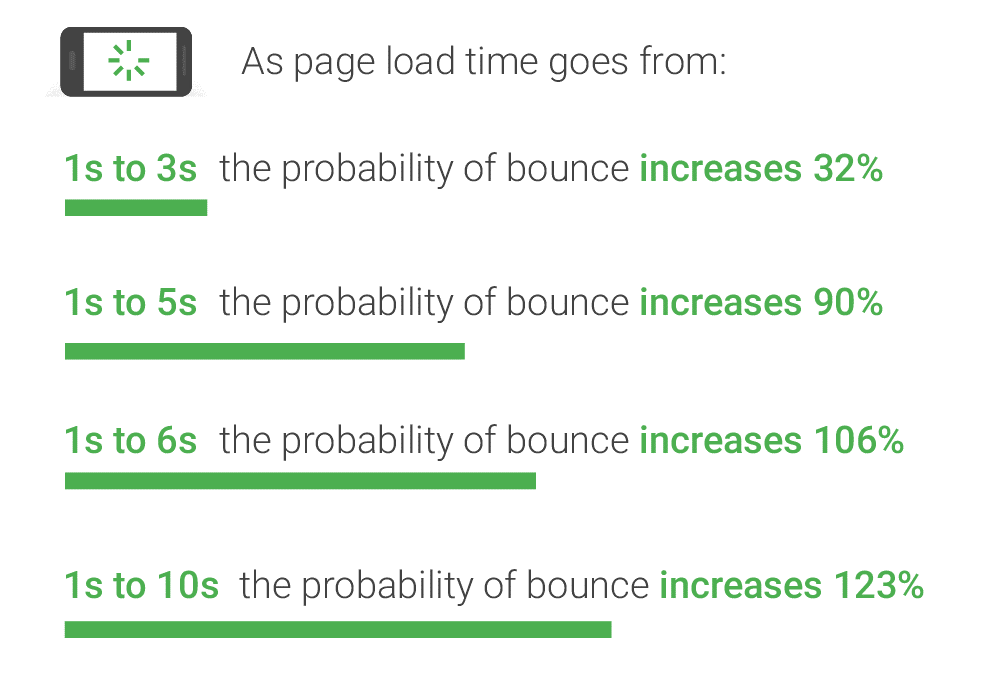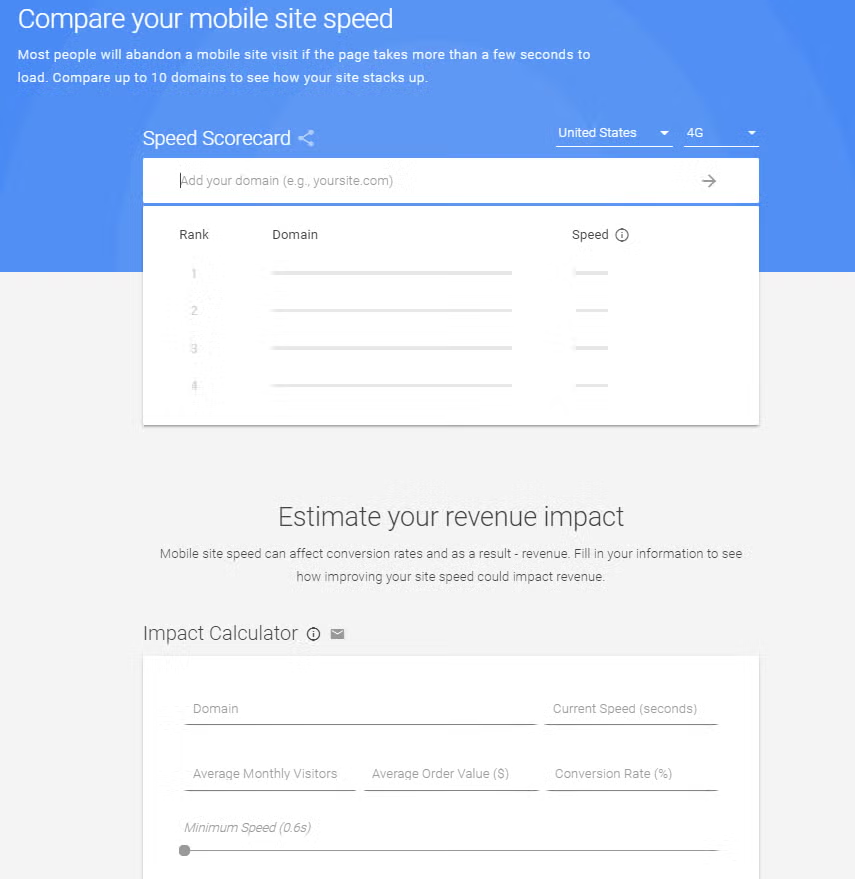July 12, 2018
| Article | Search Engine Optimization
Google Speed Update Rolls Out Worldwide
On the morning of July 9, 2018, Google initiated their planned “Speed Update” that they first announced in January 2018. According to Google’s Webmaster Central Blog, the refresh will impact only mobile pages “that deliver the slowest experience to users and will only affect a small percentage of queries.”

Google has stated that they may not necessarily penalize a slow-loading page if it contains “great, relevant content.” But “great, relevant content” can be arbitrary and assuming that content will save a page from the Speed Update could be a recipe for disaster.
Why did Google Roll Out a “Speed Update?”
At its core, Google recognizes that web users truly care about the speed of a page. Even though site speed has been a ranking factor for several years, that signal was focused on desktop searches. This recent Speed Update is geared for mobile searches.
Google has conducted thorough analyses and studies to acquire key metrics on mobile page speeds. Since last year, the average time it takes to entirely load a mobile page has dropped from 22 seconds to 15 seconds, according to their new analysis. That’s not great when you account for the fact that 53% of mobile site visitors leave a page that takes longer than 3 seconds to load.
The Relationship Between Load Time and Bounce Rate
A bounce is defined as a single-page session on a site. The bounce rate is the percentage of all site sessions in which users only viewed a single page. Studies confirm that when a website is slow to load, users are more likely to abandon the website.
Google analyzed the impact of load time on mobile bounce rates:

Simply put, slow mobile sites create frustrating user experiences – and Google wants to promote more seamless mobile browsing experiences and journeys.
Was Your Mobile Page Impacted by the “Speed Update?”
While there is no available tool that notifies you as to whether your mobile page is impacted in its rankings by this new update, Google indicates that there are several resources that you can use to evaluate a page’s performance:
Chrome User Experience Report: This tool offers user experience metrics for how real-life Chrome users experience popular destinations on the web.
Lighthouse: Part of Chrome Developer Tools, this is an automated tool used to audit the quality of web pages.
PageSpeed Insights: This tool reports on the real-world performance of a page on desktop and mobile devices and offers optimization suggestions and opportunities. According to Google’s studies, retail, travel, and healthcare sectors have the most room for improvement. Compressing images and text can significantly improve load times.
Comparing Mobile Site Speed to Competitors and Estimating Revenue Impact
As further evidence of the value Google places on mobile site speed, another tool allows you to compare the site speeds of up to 10 domains at a time.

This tool can help you to understand how your site stacks up against competitors in terms of mobile speed. Additionally, you can input metrics like average monthly visitors, average order value, and conversion rate, to understand the potential revenue impact you could experience by improving speed by just a few seconds.
Mobile site speed matters more so now than ever before. Make sure that you – and all of your pages – are ready.